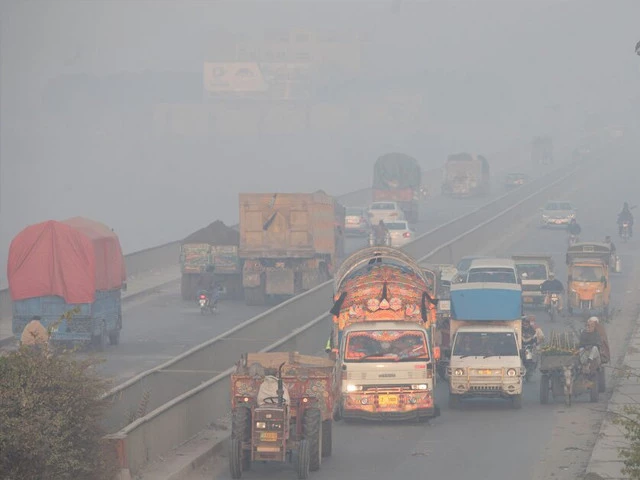Smog in Lahore. Photo file: REUTERS
The Punjab government has imposed a province-wide ban on the use of wood and charcoal by restaurants and barbecue joints, in a bid to curb worsening air pollution. All hotels and restaurants were given 15 days to install extractor hoods and smoke control systems, or face legal action under environmental laws.
According to a directive issued on Wednesday, the Environment Protection Agency (EPA) and the Punjab Food Authority (PFA) have launched joint operations to inspect food outlets and enforce compliance. The order specifically targets barbecue restaurants and traditional cooking facilities known to emit heavy smoke and particulate matter.
EPA Director General Imran Hamid Sheikh said field teams have been mobilized in all districts to ensure immediate enforcement. “There is no place for smoke emitting restaurants in Punjab. Those who do not install suction systems within 15 days will face strict action,” he said. Sheikh added that deputy commissioners across the province have been tasked with overseeing the implementation. “Punjab will not tolerate further deterioration in air quality,” he warned.
Officials said the new measures are part of an intensified smog mitigation plan implemented ahead of the winter season. EPA teams were ordered to check industrial emissions, open fires and vehicle smoke alongside restaurant inspections.
The crackdown comes as air quality across Punjab continues to deteriorate. According to the latest eight-hour report released by the EPA, the province recorded an average air quality index (AQI) of 164, placing it in the “unhealthy for sensitive groups” category. Gujranwala recorded the highest pollution levels with an AQI of 239, followed by Kasur with 209 and Lahore with 206 – all classified as “very unhealthy”.
Other major cities also reported worrying figures, including Narowal with 183, Faisalabad with 181 and Hafizabad with 175. Even small urban centers such as Chiniot, Sialkot and Okara recorded AQI levels between 158 and 175, far exceeding the safe limits.
The EPA noted that the AQI calculations were based on data for PM2.5 particles, which pose the greatest health risk due to their ability to penetrate deep into the lungs and bloodstream. Health officials warn that exposure to such high levels can trigger respiratory distress, decreased immunity and other health complications, especially in children and the elderly.
Environmental experts stress that consistency of enforcement remains essential.
Winter, east wind intensifying smog in Lahore
Air pollution in Lahore and several other cities in Punjab has reached dangerous levels due to cold temperatures and polluted air coming from India. IQAir, a global air quality monitoring platform, ranked Lahore as the world’s most polluted city in the morning.
The EPA reported that polluted air across the eastern border had increased the concentration of fine PM2.5, causing a sharp decline in air quality in Lahore. The low wind speed prevented the dispersion of pollutants, forcing them to accumulate near the ground.
The Smog Monitoring Center reported that pollution levels were highest between 6 a.m. and 11 a.m., with a slight improvement until 5 p.m. and a further increase thereafter.
Health experts have advised citizens, especially vulnerable groups such as children, the elderly, pregnant women and people with respiratory or heart conditions, to avoid exposure to outdoors and keep windows closed.
Understanding the Air Quality Index
The Air Quality Index (AQI) is a tool used to communicate air quality and its potential health effects. It is divided into six categories based on the concentration of pollutants in the air:
Good: With an AQI value between 0 and 50, the air quality is considered satisfactory and poses little or no risk to the general population.
Moderate: An AQI value between 51 and 100 indicates acceptable air quality. However, there may be a risk for some people, particularly those who are unusually sensitive to air pollution.
Unhealthy for Sensitive Groups: For AQI values between 101 and 150, members of sensitive groups, such as those with respiratory or heart conditions, may experience health effects. The general public is less likely to be concerned.
Unhealthy: With an AQI value between 151 and 200, some members of the general population may experience health effects, while sensitive groups may experience more serious effects.
Very unhealthy: AQI values of 201 to 300 signal a health alert, where the risk of health effects is increased for everyone.
Unsafe: An AQI of 301 or higher represents emergency conditions, with a health warning indicating that everyone is more likely to be affected.




